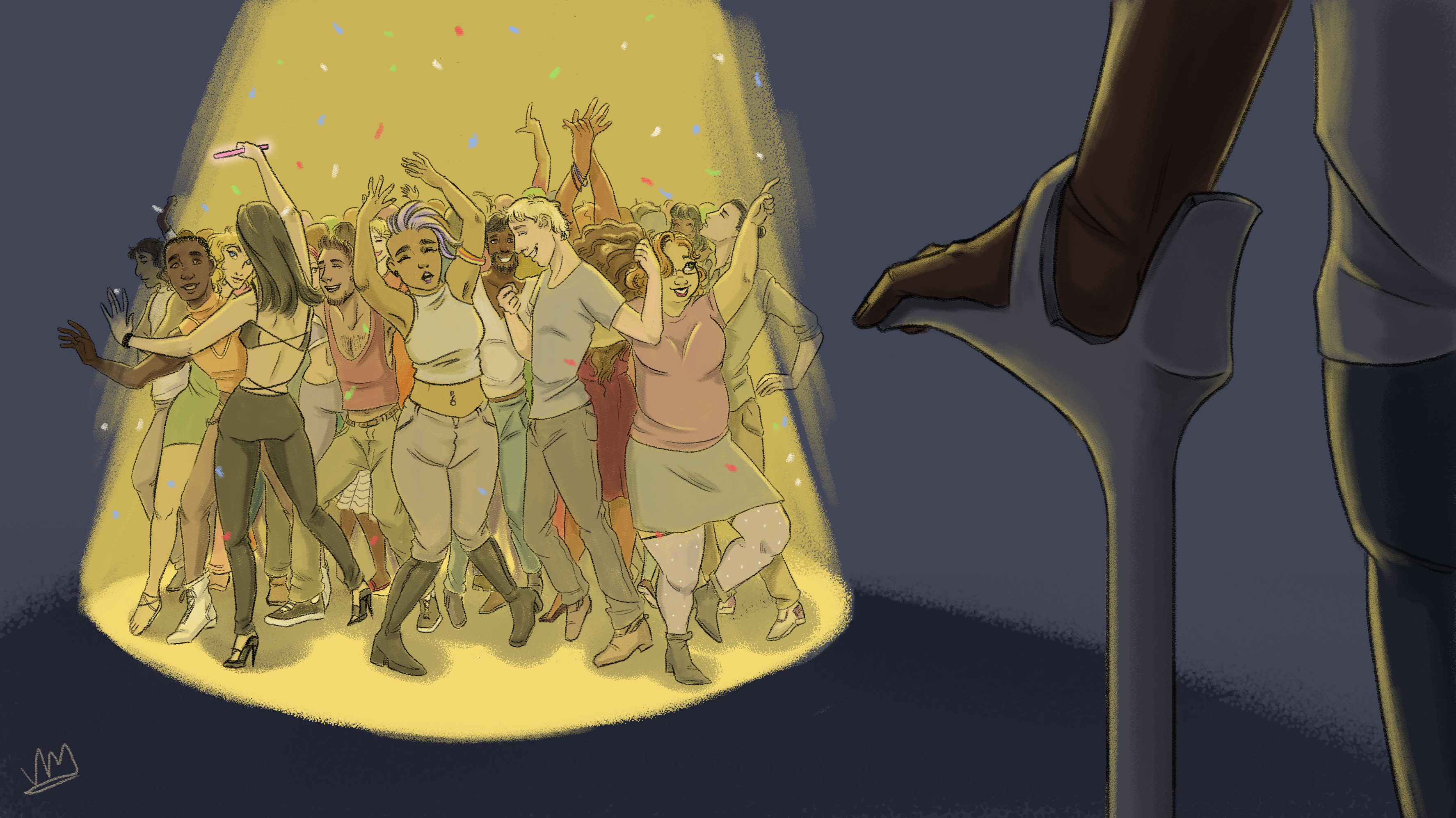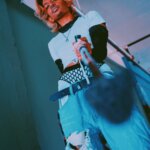I love my queer community, I really do. There is something comforting and reassuring about a community of misfits all of whom share that familiar thread of stories of shame, ostracism and harassment.
You can exchange those frustrated looks when a cisgender person loudly asks “but how do you really know you’re that gender?” You can reminisce together about all the former crushes you used to keep secret, or about your first “gay movie.” My queer community is a little reprieve away from a world that views straight and cisgender people as the default.
So it’s all the more heartbreaking when I find myself behind rows of barriers to access that community.
I’m not only queer, but I’m also disabled and neurodivergent. I walk with a crutch most days, and I experience chronic pain. And it bumps up the difficulty level for having real-life queer friendships just a little bit.
I’ve found most of my closest queer friends online, and despite living in the same city, we may only meet a couple of times outside of our internet space over the course of a year.
As a disabled queer, I feel ill-fitted in Toronto’s queer community. It goes beyond just the physical spaces we hold, but also to the reasons we locate our community there. There’s a priority on partying and dancing — and a lot on physique.
When you can’t party until 3am anymore because you’re prone to back pain and it might mean not being able to get out of bed for a week — well, there aren’t a lot of places where you fit in.
It’s isolating and lonely. In disabled spaces, your experiences of homophobia, transphobia or binarism (the belief in a strict a rigid gender and sexual binary) and racism in the medical system are often ignored or dismissed, while in queer spaces you have to defend an inability to drink or access certain spaces.
When attending a queer space in Toronto’s west end several months ago, the bar was all one level and there was a ramp to the doorway, although the bathroom was downstairs. I arrived not long after doors opened and there were already a few people in the small bar. When I arrived, the majority of the limited seats were already filled with groups of friends so I ended up on a bench against a wall.
By the time I had a beer in hand, the place was beginning to fill up quickly. I went straight back to the bench so I wouldn’t lose the spot I had. With my crutch and no table, I had to finish my beer before I could attempt to hit the dance floor. But by then, the dance floor was so crowded that I could barely move. I held back tears the entire way home, already sore and tired from making the trip and back.
Even when there are ramps to the doorway and a ground floor bathroom, that doesn’t make an event or space accessible. Other factors like seating, hallway sizes, stalls that fit or have all the accessibility modifications all play into how accessible a space really is.
And then there’s the disheartening truth that some events will always be inaccessible to someone. Between financial circumstances, mobility limitations, sensory sensitivities, and sobriety, there will always been someone left standing outside the door. But that doesn’t mean that they shouldn’t have other options.
It’s one thing to deal with inaccessible spaces. The queer community is marginalized, so there are limited funds that can go into leasing large open spaces or renovating to add accessible features. We have learned to make do with what we have. The disabled and queer communities alike have had to improvise and MacGyver their spaces for decades.
What is hardest to deal with is when a disabled queer person brings up accessibility, they are often met with “Well just don’t go then” or the recommendation for a monthly afternoon social, usually involving colouring pages or even high tea. These seem to be the only events that promote accessibility or have more accessible venues.
While I take no issue with colouring pages and board games on their own, there is something infantilizing about having all of your social outings planned out very similarly to playdates your mother would organize for you in elementary school. It’s as though because I am disabled, I could not possibly want to partake in grownup activities like going out for drinks or being out past 10pm.
It’s also dismissive to reduce my options to playdates or no dates. This reflects how ableist systems at large desexualize and infantalize the disabled body.
We need to have more options. We need to do more for disabled queers than just a ramp at the door. The queer community should be embracing us, welcoming us, actively inviting us in. Our collective queer identity shouldn’t place value only on the most abled and privileged.
Accessible events might be better attended if disabled queers didn’t just feel tolerated, but if they were actually encouraged to join and exist openly. People with disabilities and chronic conditions shouldn’t have to schedule their lives around a monthly event just to have some kind of social life beyond their computers.
As a cripple queer, I want to be able to attend socials and parties where I can choose to sit and rest or dance or, even more outrageously, a combination of the two throughout the night. I want to be able to attend events after 8pm and I want to attend events that don’t feel like an oversized child’s tea party.
I want to be able to pick a weekend and be able to make plans, and I want to have the option of flaking on those plans without needing to wait another week to attend. I want events for sensory sensitive disabled people who can’t take the flashing lights of clubs or the pounding of loud music. But most importantly, I want to feel like my crutch, my spinal scar, my semi-paralyzed legs, are wanted and loved and welcomed when I’m with my queer community.
Disabled queers want more than just to be able to get up the doorstep to your party. We want to be a part of your community: we want to be part of our community. We don’t want to have to choose between spaces made for our bodies and spaces made for our hearts and minds.


 Why you can trust Xtra
Why you can trust Xtra


